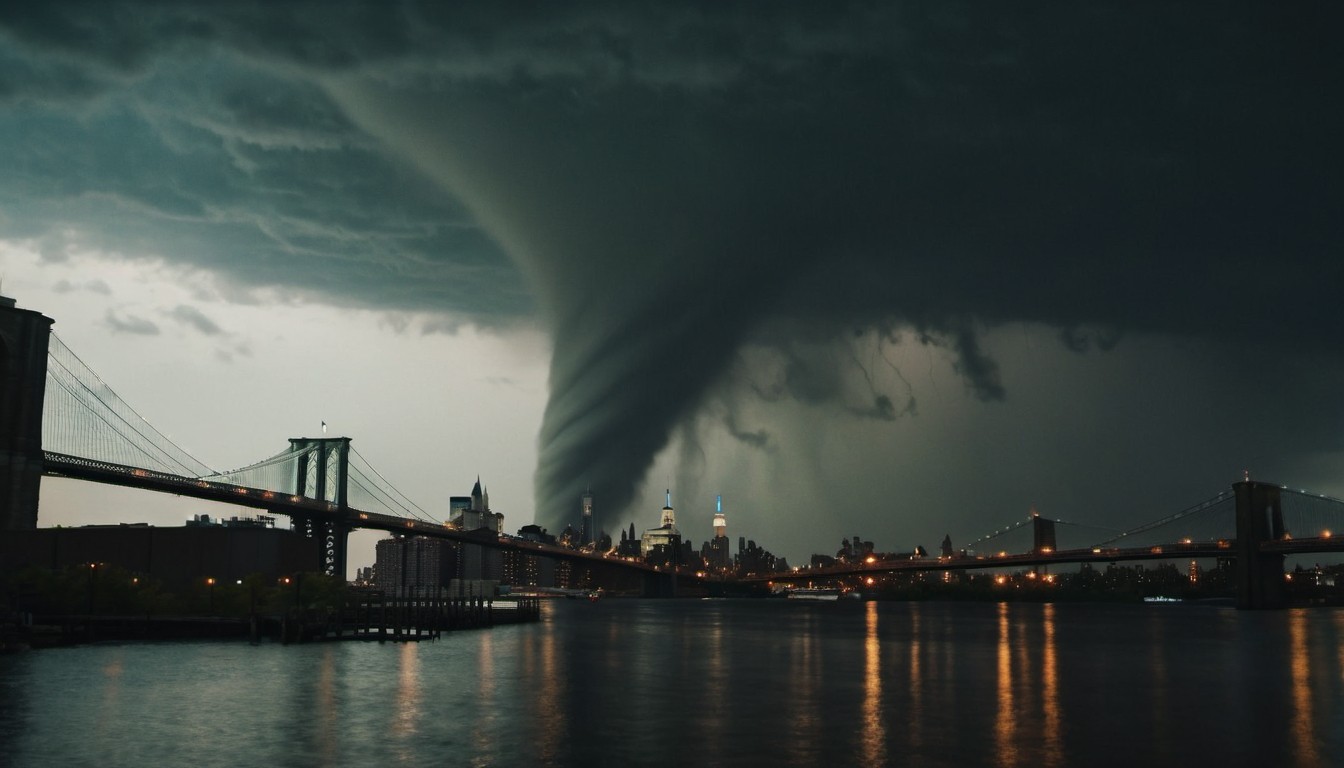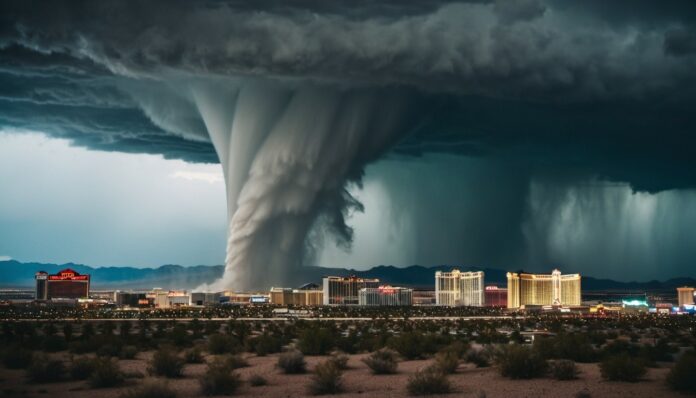A tornado is a powerful, spinning column of air that stretches from a thunderstorm cloud down to the ground. They are often shaped like a funnel and can cause a lot of damage as they move across the land. Tornadoes form when warm, moist air meets cool, dry air, creating strong updrafts and spinning motions within a storm.
Tornadoes can happen almost anywhere in the world, but they are most common in the United States, especially in an area known as “Tornado Alley.” This region includes parts of Texas, Oklahoma, Kansas, and Nebraska, where the conditions for tornadoes are just right.
How Tornadoes Form
Tornadoes usually form during severe thunderstorms when different types of air masses meet. The warm, humid air from the Gulf of Mexico rises and mixes with the cooler, drier air from Canada. This creates instability in the atmosphere, leading to powerful thunderstorms with strong updrafts.
Within these storms, if the wind direction and speed change dramatically with height, it can create a spinning effect called wind shear. When the updrafts tilt this spinning air into a vertical position, a tornado can form. The tornado becomes visible when it picks up dust, debris, and water droplets, creating the familiar funnel shape.
Tornado Strength and Measurement
Tornadoes are measured using the Enhanced Fujita (EF) Scale, which ranks them based on the damage they cause. The scale ranges from EF0, which causes light damage, to EF5, which can destroy buildings and uproot trees. Wind speeds in the strongest tornadoes can exceed 200 miles per hour (320 kilometers per hour).
Meteorologists use radar to detect the rotation within storms and to issue warnings when a tornado is likely to form. Tornado warnings are crucial because they give people time to seek shelter and protect themselves from the storm’s powerful winds and flying debris.
Tornado Safety Tips
If a tornado warning is issued, it’s important to act quickly. The safest place to be during a tornado is in a sturdy building, preferably in a basement or an interior room without windows on the lowest floor. If you are outside or in a car, try to find shelter in a nearby building. If that’s not possible, lie flat in a low-lying area and cover your head to protect yourself from flying debris.
It’s also helpful to have an emergency kit ready, with essentials like water, non-perishable food, a flashlight, and a first-aid kit. Keeping a battery-powered weather radio can also be a lifesaver, as it will provide updates and warnings even if the power goes out.
Famous Tornadoes in History
One of the most famous tornadoes in history is the Tri-State Tornado of 1925, which traveled through Missouri, Illinois, and Indiana. It was the deadliest tornado in U.S. history, killing 695 people and injuring thousands more. The tornado was on the ground for over 200 miles, causing widespread devastation.
Another significant tornado event was the Super Outbreak of April 1974. Over a two-day period, 148 tornadoes touched down across 13 states in the United States, causing massive damage and loss of life. This event highlighted the need for better forecasting and warning systems, which have since improved significantly.
Tornado Myths and Facts
There are many myths about tornadoes, one of which is that opening windows will reduce the pressure and prevent damage. This is not true and can actually make things worse by allowing more wind and debris into your home. Another myth is that tornadoes cannot cross rivers, mountains, or large cities. Tornadoes can and do occur in all types of terrain and locations.
A common fact is that tornadoes are most likely to occur in the late afternoon and early evening when the atmosphere is most unstable. However, they can happen at any time of day or night. Being aware of the weather conditions and having a plan in place can greatly increase your chances of staying safe during a tornado.
Tornado Research and Technology
Scientists are continually researching tornadoes to better understand how they form and to improve forecasting methods. Storm chasers, for example, gather valuable data by getting close to tornadoes and using instruments to measure wind speed, pressure, and humidity. This data helps meteorologists refine their models and improve warning systems.
Advances in technology, such as Doppler radar, have significantly improved our ability to detect tornadoes and provide warnings. Doppler radar can detect the rotation within a storm, giving forecasters critical information about the storm’s potential to produce a tornado. This technology has saved many lives by providing earlier and more accurate warnings.
Tornado Preparedness
Communities in tornado-prone areas often have tornado drills to ensure everyone knows what to do when a tornado warning is issued. Schools, businesses, and households practice moving to designated safe areas quickly and efficiently. These drills are an important part of being prepared and can make a big difference in an actual emergency.
Having a family emergency plan is also essential. This plan should include where to go during a tornado, how to communicate if family members are separated, and what supplies to have on hand. Being prepared can help reduce fear and confusion during a tornado and increase your chances of staying safe.
